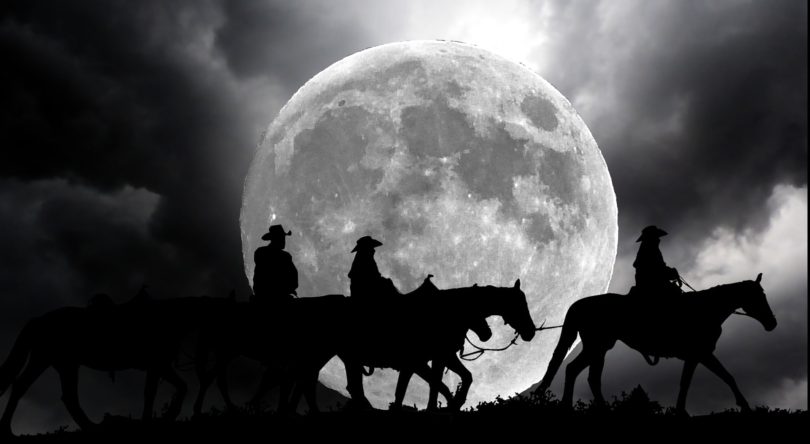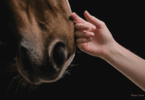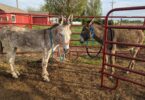Horse riding in the dark can be magical (and safe) with the proper preparation.
Horseback
No matter which camp you’re in, trail riding at night can actually be a fun way to experience new adventures with your equine partner (and fellow riders).
There are several precautions you should take before hitting the trail at twilight, and you need to ride with the ride gear. This article walks you through the basics of safely riding horses in the dark.
Why Try Night Trail Riding ?
You’ll get to experience the world in a whole new way, plus night riding can be a great group activity for you and your barn friends.
Since it’s dark and your vision is more limited, your other senses will automatically heighten.
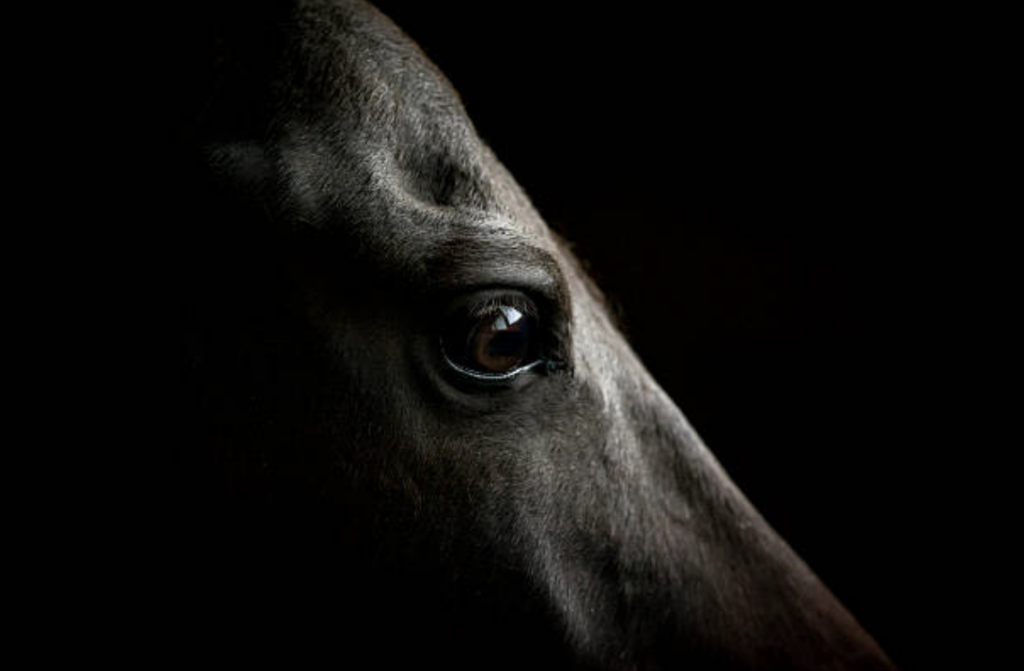
Awaken all of your senses.
Listen to the croaking frogs, chirping crickets and rustling leaves as your horse walks along. Smell the fresh-cut hay field, and feel the cool night breeze on your face.
One of the most sensational parts of night riding is that your horse’s gait tends to feel much larger. (Yes, even for ponies!) Riding in the dark also helps you learn to trust your horse more and build a stronger bond since he can see the trail better than you.
If you ride in a place far from a town or city, you may be lucky enough to take in a sky full of stars. If you’re riding under a full moon, prepare yourself for the magic of a moonlit path.
About Horse Night Vision
Horses can see just as well on a moonlit or starlit night as humans can in daylight. Equine eyes dilate to let in as much light as possible.

Horses see much better than we do at night.
Because of this, avoid shining bright lights (e.g. flashlight, headlamp) on the trail or in your horse’s face, as your horse will have a hard time adjusting to different types of light.
For example: It takes horses’ vision approximately 10-20 minutes to adjust between a brightly lit barn and the dark outside world.
15 Night Horseback Riding Safety Tips
Like riding in the daytime, safety is paramount when it comes to horse riding at night. With a few simple precautions, you can help ensure you, your horses, and any friends who come with you have a stellar experience.
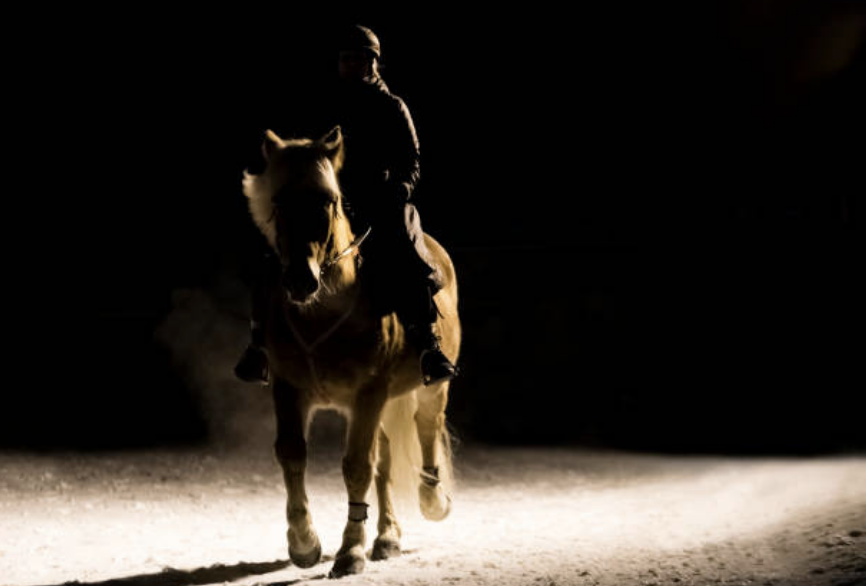
Safety comes first when riding in the dark.
Here are some tips to help you stay safe and enjoy the dream-like experience of riding a moonlit trail:
- Wear a helmet: Night riding isn’t the time to shortcut your safety, so be sure everyone in your group has proper safety equipment. If you’d like to go a step further, invest in an inflatable equestrian air vest. (Just be sure you remember to unclip it before dismounting!)
- Ride the right horse: Choosing the right horse is a huge part of the night riding equation. Choose a solid horse that you trust, not a green and/or spooky steed. Remember, you may be a little nervous on your first time out at night, so you want an extra reliable partner.
- Ride the right trail: Choose a trial that matches your abilities and confidence. Use a wide trail for your first rides so that, if your horse spooks, you have plenty of room and don’t bump into other horses or trees.
- Scope out your path: Ride the trail in the daylight first to get familiar with it. Your horse will get to know the trail so he can confidently navigate it in the dark. Keep in mind that your horse sees well at night but may not pay attention to things that are important to you like low branches.
- Desensitize your horse to light: Since other riders might use headlamps or flashlights (even if you don’t), it’s good to get your horse used to these beams of light beforehand. Start at dusk so the flashlight isn’t as bright. Work from the hooves up to the body until he’s comfortable with the light being shined all over him. Next, try shining the flashlight or head lamp around while you’re in the saddle, gradually working up to riding with it at different gaits. Do this at later and later times until he’s relaxed with a bright light in the pitch dark.
- Take a friend: Ride with a friend and tell someone back home where you are going and what time you plan to be back.
- Carry a flashlight: Take a flashlight in case you need to check out a weird sound, see if the footing is safe, or repair some tack on the fly. Don’t use it to light your path, however, as this actually makes it more difficult for both you and your horse to adjust your vision.
- Wear a glow stick: LED lights and glow sticks are a good alternative for a little extra light that won’t mess up your horse’s night vision (or your own). Check out our What to Bring list below for recommendations.
- Be visible: Wear brightly colored, visible clothing with reflective stripping and get your horse some reflective gear, as well. Check out our What to Bring list below for recommendations.
- Avoid roads and highways: The bright headlights and cars may scare your horse, if he’s not familiar with them, and they’ll definitely mess with his night vision. Furthermore, drivers may not be able to see you well, even with your glow sticks and reflective gear.
- Start small: Don’t go out on a 10-mile trail your first time riding at night. Pick a short path, close to home, and build up from there over time.
- Keep it slow: Only trot or lope on ground that you know is flat and free from bumps and holes. Always walk when you’re unsure of the footing. Even if you know the trail, unexpected footing could come up quickly in the dark. Only walk along roads and highways.
- Watch for animals: Predatory wildlife are more active at night. Be aware that your horse can spook more easily because anything could be a tiger (in his mind, anyway!). Also, depending where you’re riding, be aware of actually encountering a predator like bears, mountain lions, and coyotes. Learn what steps to take should you come across a dangerous animal in your area. Also, beware of loose dogs!
- Bring bug spray: No matter where you ride, you don’t want to be eaten alive by mosquitoes. Consider additional health/comfort aids you might need for your area, such as bear repellent or a portable snake bite kit.
- Be Patient: Remember to be patient with your horse (and yourself), as any new experience takes some getting used to. The more you practice, the easier it will get.
Night Horseback Riding Checklist
In addition to your normal tack and attire, there are a few extra items that come in handy on trails at night.
Checklist for Riding at Night:
Helmet (of course!)
- Cell phone and/or satellite phone (fully charged)
- Reflective rider clothing
- Reflective horse accessories
- Glow sticks
- They last about 8 to 10 hours but take along a few extra in your saddlebag just in case.
- Flashlight (keep it on your belt)
Pocket knife or multitool
- Hoof pick
- Protective hoof boot (if you lose a shoe)
- Bug spray
- Rain poncho/ coat
- First aid kit
- Saddle bags
- Location specific items (bear spray or snake bite kit)
Learn more about preparing for
Night Riding Done Right
If you’ve never ridden at night before, be sure to try it before writing it off. With some preparation, support from friends, and a trusty equine partner, you may find discover a wonderful new adventure.
Be safe, be prepared, and have fun!
P.S. If you enjoyed this article, trot on over to:
- Happy Trail Gear Guide: What to Wear Horseback
Trail Riding - 7 Best Satellite Phones for Horse Riders Who Need Help NOW
- The Ultimate Horse Trailering & Packing Checklist
- What to Wear Horseback Riding in Montana
- 6 Best Saddle Pads for
Trail Riding and Happy Horses - 6 Tips for Horse Riding With Your Dogs
- 5 Weird Reining Stop Tips That Actually Work
Additional Reading:
- https://horseandrider.com/health-and-advice/eqnightrid637-12993
- https://www.thesprucepets.com/tips-for-horseback-trail-riding-at-night-1887057
- https://www.equisearch.com/articles/riding-your-horse-night
- https://www.horseforum.com/horse-riding-horse-activities/night-time-riding-49901/

